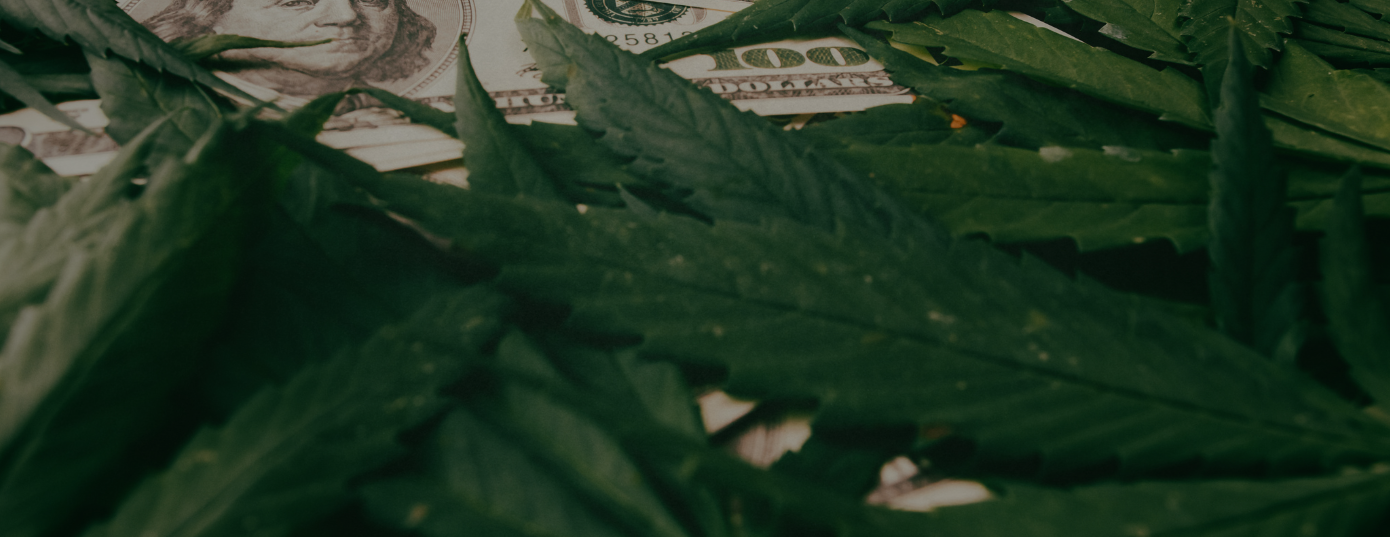When I remind myself of all the ordinary things humankind has made through history with the help of cannabis, I can’t help but think that it seems like we’ve forgotten that this hemp has been living among us for thousands of years, and that we’ve made quite a successful living with its help.
All across planet Earth, our ancestors have been benefiting and gaining advantage from seizing the powerful qualities of cannabis since the beginning of time. Materials derived from this extraordinary plant had different uses: its buds used to make pain ointments, its hemp fiber to make handy ropes, and its seeds for food.
Despite weed being popular in the American continent, historical records tell us that weed was not native to America. Its roots trace all the way back to the Eastern continent, more specifically in Central Asia, where China, India, Kazakhstan, Mongolia, Pakistan and Russia were blessed with the wonders of cannabis. How it spread to America is an interesting tale to be discovered in this article.
The Origins of Weed
Robert C. Clarke and Mark D. Merlin published on Cannabis: Evolution & Ethnobotany that there are various theories that point to various places where marijuana could have originated. The possible locations have been narrowed down to the following regions: from the Caucasus to the Altai Mountains in Central Asia to the foothills of the Himalayas and Hindu Kush Mountains in South Asia; from the mountainous Hengduan-Y ungui region, to the Yangzi River and Huang He in East Asia.
With so much speculation on its original home, perhaps the debate shouldn’t even be exactly where the cannabis hemp sprouted first; truth be told, all these locations played a key role in the evolution of cannabis 10,000 years ago. As different subspecies were moved and cultivated by nomads migrating in search for warmer temperatures, weed was moved too. According to Leafly, cannabis would eventually spread to the Middle East and the east coast of Africa, reaching Europe and America hundreds of years later.
Clarke and Merlin propose an interesting look into the cannabis psychoactive development. The authors mention that the early settlers in Central Asia learned that they could extract long lasting and water resistant fibers to collect yarn, weave clothing and even fish nets. In regards to the search for food, they could have realized its psychoactive potential while eating them thanks to the resin-covered bracts surrounding the seeds, which are potentially psychoactive and could have been ingested along with the tiny seeds.
Burning plants to cleanse were also a common practice among tribes, meaning that they would have induced a much faster psychoactive experience while burning cannabis. The authors explain that it may have been unintentional at first, but the fact is that humans eventually ventured into the cognitive experience that cannabis brought, cementing its mind altering effects as a spiritual, recreational and medicinal ally.
“They used the plant as a food supplement, an important source of fiber, fuel, and medicine, and they revered its psychoactive properties as a mental elixir for relaxation, recreation, and spiritual communication. Most importantly, by consciously or inadvertently carrying seeds as they migrated, Cannabis became part of their transported entourage. Humans and Cannabis became linked in a number of ways very early on and have remained so until modern times.”
– Clarke and Merlin, 2013
When cannabis made its way to America, humans were fully aware about the psychoactive effects of the plant – except that in some cases it wasn't really taken with that purpose in mind.
Cannabis in North America
Cannabis arrived in Mexico with the invasion of the Spaniards in the early 1500s led by Conqueror Hernán Cortés, who was in command of an expedition to explore and secure the interior of Mexico for its colonization. According to Leafly, when Cortés made his second expedition to Mexico, he put in charge another conqueror named Pedro Cuadrado, who set up a hemp business to make rope and textiles. Afterwards, the locals started using the cannabis hemp to get high, and Cuadrado was forced to stop production.
It is well known that indigenous people from Mexico –and to be honest, from many other cultures– were no strangers to consuming drugs and even enjoying the psychoactive effects. Mesoamerican cultures like the Aztects and the Maya had been using psychedelics and hallucinogens since forever. They used these substances during their rituals, enhancing their spiritual practices to heighten their communication with their gods and bridging the gap between the physical and the spiritual world.
Cut to hundreds of years later, Spanish viceroys were ordered to encourage hemp production through North America; being climate appropriate, it was decided that California would be the best place to farm it. According to Leafly, it’s no surprise that California increased its hemp production from 12,500 to over 220,000 pounds from 1807 to 1810. However, farming was interrupted by the Mexican Revolution, detaching the state from Spanish hands.
Weed must have stayed in the United States through California, but back in the 1910s it was common knowledge that Mexican immigrants had brought marijuana to the country. There’s no confirmed explanation as to why Mexican people baptized weed with such a name, some say that it was sold in brothels and people came looking for Mari and Juana, others say the term may come from the Nahuatl “mallihuan”, meaning "prisoner”. Truth be told, the word “marijuana” has always been associated with Mexican immigrants, always lingering in the collective subconsciousness. According to Green, during the 1930s there was resentment towards Mexicans who lived in the United States. Fear instigated a storm of researching immigrants, linking cannabis use to violence and crime.
Cannabis in South America
The arrival of Christopher Colombus in 1492 marked a huge change in the globe; not only were cultures clashing against each other, but the introduction to different animals, agriculture, technology and even diseases marked the start of something highly significant and completely new between continents.
By the mid 1500s, Spain was already promoting cannabis hemp production in its colonies throughout South America. Leafly affirms that around 1545, hemp seed was already being sown in the Quillota Valley, near the city of Santiago in the country of Chile. The final product was rope for the Spain army stationed in Chile, and as the hemp production grew more and more successful, there were attempts to start the same plans in Peru and Colombia. In the end, only Chilean production proved successful.
Cannabis was not introduced to Brazil because of the Spaniards and their hemp production; instead, the Portuguese were the ones who played a big part in this. After Central Asia introduced cannabis to East Africa and spreaded all through the West, historians say it sailed the Atlantic Ocean all the way to Brazil, along with the enslaved Africans who were forcefully taken across the sea by the portuguese.
Cannabis in the Caribbean
The origin of weed in Jamaica starts in another continent, in two different countries. Back in the 1830s an Irish physician by the name of William Brooke O’Shaughnessy was sent to India to treat a cholera outbreak. In his stay there, he learned that Indian people used a type of medicine called “ganja”. According to History Daily, the term is believed to come from the Old Pershian or Old Iranian meaning “treasure”. Brooke O’Shaughnessy took this knowledge back home, and it is said that for 39 years English doctors sang about the wonders of “Indian hemp”.
Back to our history lesson, if you remember correctly there was a time when the United Kingdom colonized India and Jamaica, among many other countries. The latter revolted against the use of slave labor in 1838, which made the British bring enslaved Indians to jamaican lands. These people traveled the ocean with cannabis seeds and eventually shared their crops with the locals, who began to call it “ganja” as well. With this newfound discovery and tired of the slave labor in Jamaica, around the 1930s a religious and political movement was born, known as the Rastafari.
Conclusions –if one could call them that
After thousands of years of having cannabis deeply rooted in these cultures, weed has gone through a series of ugly and heavy bans. Years later, in some countries it is still in the process of being decriminalized. This means that the law removes some criminal sanctions against drug possession, always under a specified amount. There will still be a punishment if you break the law or go overboard with the specifications, but it’s definitely less severe.
In other cases, weed has already started to be legalized around America, even the world. From Uruguay to Mexico, the United States and Canada, the decriminalization process is looking hopeful. We still have a long way to go, but I believe that knowing its origin and the traveling adventures of the hemp will help us see cannabis in a different light, and perhaps knowing our ancestry will aid the cause and speed the process to a more accepting cannabis world.
Author: Mary Jane
Clarke, C.R. & Merlin, M.D. (2013). Cannabis: Evolution and Ethnobotany. University of California Press. Retrieved from https://biblioteca.matinhocheiroso.com/Cannabis/Cannabis%20Evolution%20and%20Ethnobotany%20-%20Robert%20C.%20Clarke%20&%20Mark%20D.%20Merlin%20-%209780520270480.pdf
Desiree, S. (2020). Cannabis in History: The Journey of the Joint. Leafly. Retrieved from https://www.leafly.com/news/cannabis-101/cannabis-history-journey-joint
The Flower Pot (2020). The Origin of a Spliff. Retrieved from https://theflowerpot.la/blogs/happenings/origin-of-a-spliff
Green. The Evolution of Cannabis Slang. Retrieved from https://greennv.com/the-evolution-of-cannabis-slang/
Kite (2022). Rastafarianism and Weed. HØJ. Retrieved from https://www.hoj.life/blogs/viden/rastafarianism-and-weed
Scully, R. (2017). How Spain brought cannabis to the Americas and influenced Hispanic culture. Leafly. Retrieved from https://www.leafly.com/news/lifestyle/cannabis-in-hispanic-culture
Shelton, J. Indian People Brought Marijuana to Jamaica And Named It Ganja. History Daily. Retrieved from https://historydaily.org/indian-people-brought-marijuana-jamaica-named-ganja
Stone, E. & Goggins, P. (2022). The origins of weed: How the plant spread across the world. Leafly. Retrieved from https://www.leafly.com/news/cannabis-101/origins-of-weed


0 comments